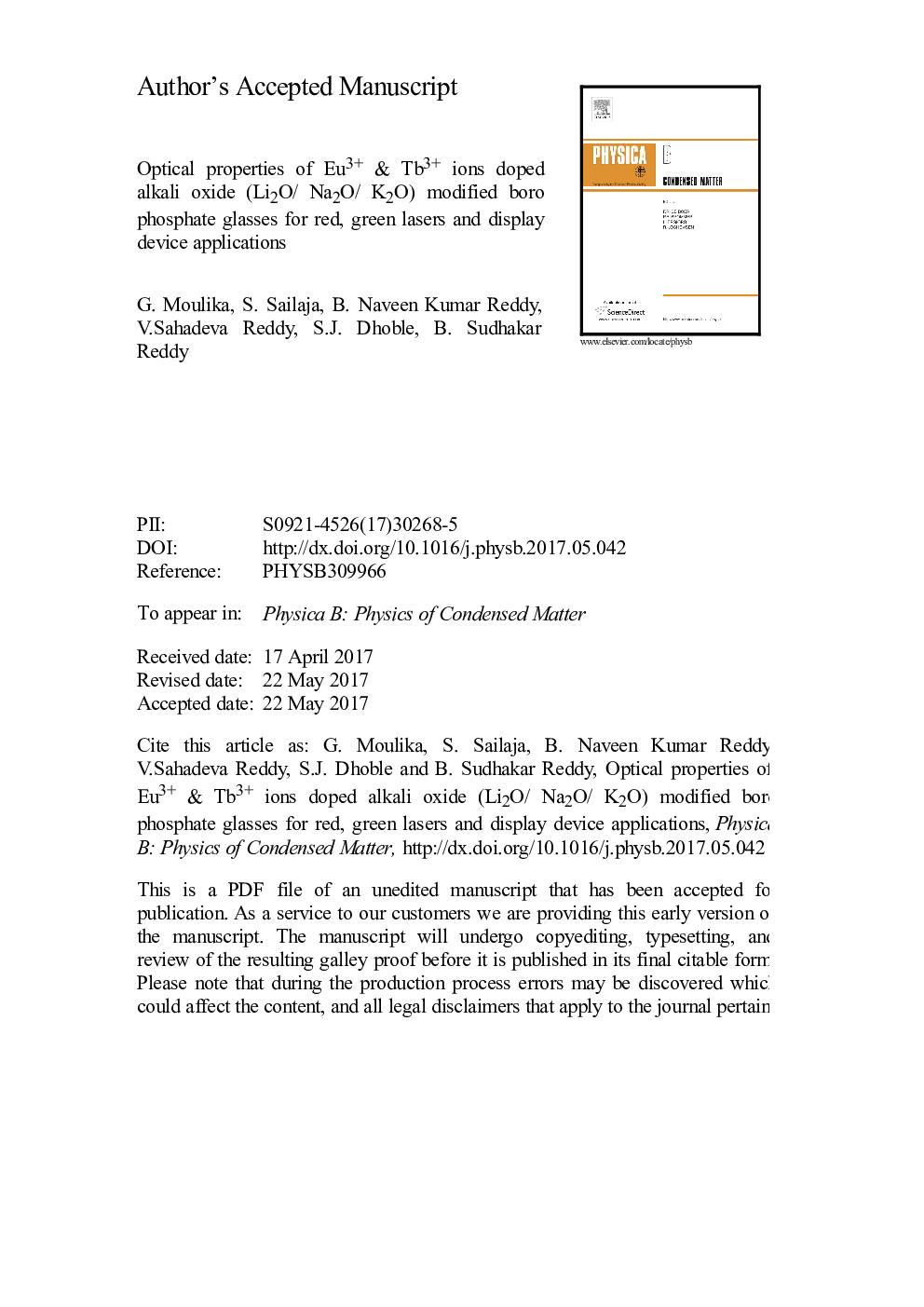| Article ID | Journal | Published Year | Pages | File Type |
|---|---|---|---|---|
| 8160998 | Physica B: Condensed Matter | 2018 | 19 Pages |
Abstract
In this article we report on alkali oxide modified borophosphate glasses doped with Eu3+and Tb3+ ions, with the chemical composition of 69.5 B2O3+10P2O5 + 10CaF2 + 5 Li2O+ 5ZnO+ R+ 0.5 Eu2O3 [where R = 5 (LiO2/Na2O/K2O)] have been prepared by conventional melt quenching technique, and the spectroscopic properties of the prepared glasses have been studied by XRD, Optical absorption, excitation and emission spectral analysis. XRD spectrum of the glasses have shown the amorphous nature of the glasses. The red emission corresponding to 5D0 â 7F2 (613Â nm) transition was observed under the excitation of 394Â nm wavelength, corresponding to Eu3+ ions, for all the prepared glasses. For Eu3+ ion doped glasses, emission bands were observed, such as; 5D1â 7F1 (538Â nm), 5D0â 7F0 (580Â nm), 5D0â 7F1 (592Â nm), 5D0â 7F2 (613Â nm), 5D0â 7F3 (613Â nm) and 5D0â 7F4 (702Â nm) are identified. In the case of Tb3+ ion doped glasses, four emission lines were observed, such as 5D4â (7F6, 7F5, 7F4), which are located at 489Â nm, 545Â nm and 585Â nm, respectively, after the samples were excited with 376Â nm ultraviolet source. The green emission corresponding to 5D4 â 7F5 (543Â nm) transition was observed under excitation wavelength 376Â nm of the Tb3+ ions for all the prepared glasses. For all these emission bands, the decay curves were recorded to evaluate the emission life times. The mechanism underlying the observed emission from the glasses was explained in terms of energy levels.
Related Topics
Physical Sciences and Engineering
Physics and Astronomy
Condensed Matter Physics
Authors
G. Moulika, S. Sailaja, B. Naveen Kumar Reddy, V.Sahadeva Reddy, S.J. Dhoble, B. Sudhakar Reddy,
